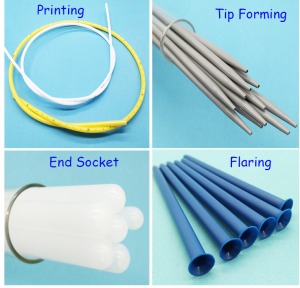Medical catheters are thin tubes that are inserted into a patient’s body for various medical procedures. They are used in a range of medical applications, from diagnostic procedures to drug delivery and even surgical interventions. The tip of the catheter is a crucial part of the device, as it determines the path and direction the catheter will take within the body.
Tip forming is the process of shaping the end of the catheter into a specific shape to aid in its insertion and maneuverability within the patient’s body. The tip is formed by heating and shaping the end of the catheter using a heat source and a specialized molding tool. The resulting shape can range from a simple curve to a more complex shape, depending on the intended use of the catheter.
The tip of a catheter is formed from materials such as polyurethane or silicone, which are both flexible and durable. The materials used must be able to withstand the heat required to shape the tip without being damaged or deformed. The process of tip forming requires precision and attention to detail to ensure that the resulting tip shape is consistent and reliable.
One of the key considerations in tip forming is the specific application for which the catheter will be used. For example, a catheter used for cardiac procedures will have a different tip shape than one used for urological procedures. The shape of the tip can affect the ease and safety of insertion, as well as the effectiveness of the procedure being performed.
There are several techniques used for tip forming, including hot air, laser, and radiofrequency heating. Hot air tip forming is the most commonly used method, in which the end of the catheter is heated with a hot air source and then shaped using a molding tool. Laser tip forming uses a laser beam to heat and shape the end of the catheter, while radiofrequency tip forming uses high-frequency energy to heat and shape the catheter tip.
In addition to tip forming, other factors such as the size and flexibility of the catheter, as well as the materials used, can affect the performance of the device. Proper tip forming is an essential part of catheter manufacturing, as it directly affects the safety and effectiveness of the device. Manufacturers must adhere to strict quality control standards to ensure that their catheters meet regulatory requirements and are safe for use in medical procedures.
In conclusion, tip forming is a crucial aspect of medical catheter manufacturing, as it determines the shape and direction of the catheter within the patient’s body. The process requires precision and attention to detail to ensure that the resulting shape is consistent and reliable. Manufacturers must consider the specific application for which the catheter will be used and adhere to strict quality control standards to ensure that their devices are safe and effective for use in medical procedures.



